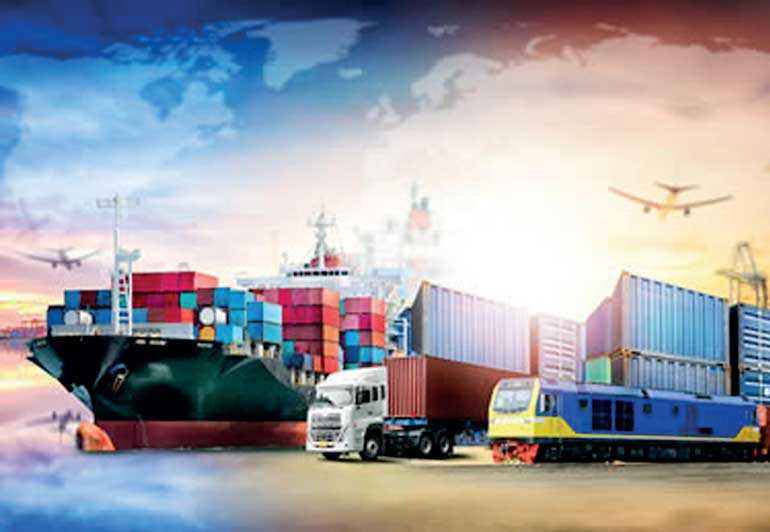Tuesday Oct 14, 2025
Tuesday Oct 14, 2025
Thursday, 28 March 2019 00:00 - - {{hitsCtrl.values.hits}}

During past decades, tariffs have been reduced all over the world due to various reasons such as bilateral, regional and multilateral trade agreements, etc. Despite such reduction in tariffs, the wide range of Non-Tariff Barriers is on the rise that in turn restrict or distort international trade flow between countries. The Non-Tariff Barriers include various measures such as quotas, licensing, prohibitions, etc.
Non-Tariff Measures and Non-Tariff Barriers
The terms Non-Tariff Measures (NTM) and Non-Tariff Barriers (NTB) have been used interchangeably in trade literature. Therefore, it is important to understand the difference between Non-Tariff Measures and Non-Tariff Barriers. According to UNCTAD report on Non-Tariff Measures (2010), the term Non-Tariff Measures (NTM) can be defined as ‘Policy measure, other than ordinary customs tariff, that can potentially have an economic effect on international trade in goods, changing quantities traded or price or both’. The term NTM is a neutral one which does not indicate any negative or positive impact on trade.
 NTM becomes a NTB if particular NTM has ‘protectionist or discriminatory intent’. Not all NTMs caused negative impact on international trade. But NTBs definitely cause negative impact on trade flow either restricting the quantity of goods traded or increasing prices. Therefore, NTBs can be described as subset of NTMs that obstruct free trade. There are different taxonomies developed by academics on NTMs and NTBs. However, due to space constraints, the writer intends to explain only the international and regional initiatives to tackle NTBs.
NTM becomes a NTB if particular NTM has ‘protectionist or discriminatory intent’. Not all NTMs caused negative impact on international trade. But NTBs definitely cause negative impact on trade flow either restricting the quantity of goods traded or increasing prices. Therefore, NTBs can be described as subset of NTMs that obstruct free trade. There are different taxonomies developed by academics on NTMs and NTBs. However, due to space constraints, the writer intends to explain only the international and regional initiatives to tackle NTBs.
International experience in retrospect
In 1948, when GATT was established the focus was mainly on tariffs because at that time tariff rates were high and it was the main obstacle for free trade. However, it is noteworthy GATT is concerned on NTMs at least to certain extent which is evident through some articles in the GATT such as elimination of quantitative restriction to trade (Article XI), regulation on subsidies (Article XVI)etc. Subsequent to the establishment of GATT, next trade negotiation rounds Annecy (1949), Torquay (1951), Geneva (1956) and Dillon (1960-61) were mainly focused on tariff.
However, the Kennedy Round which was held from 1964 to 1967, initiated the first system of ‘Reverse notification’ of NTMs. Subsequently, the Tokyo Round which was held from 1973 to 1979, adopted six agreements often referred as ‘Tokyo Round Codes’ to control the use of NTBs. The six agreements are as follows:
(a) The agreement on Government Procurement
(b) The agreement on Subsidies and Countervailing Duties
(c) The agreement on Anti-Dumping
(d) The agreement on Customs Valuation
(e) The agreement on Technical Barriers to Trade known as Standards Code
(f) The agreement on Import Licensing
However, above mentioned agreements that were adopted during Tokyo Round had little success in mitigating the impact of NTBs. Because those agreements had only the ‘plurilateral’ status which means the agreements are not binding on the entire GATT membership but limited only to voluntary membership. During Uruguay Round which was held from 1987 to 1994, it was reiterated member’s obligation of notification of NTMs and suggested the establishment of central repository of notifications at WTO secretariat. Further, several new agreements such as agreements on SPS, safeguards, pre-shipment inspections and rules of origin were also adopted. Following Uruguay Round of negotiations, all WTO agreements become multilateral except agreement on government procurement, which means such agreements are applicable to all WTO members.
Presently, WTO notification requirement covers 24 subject areas such as agriculture, customs valuation, Government procurement, import licensing and pre-shipment inspections, rules of origin, SPS, TBT, anti-dumping, quantitative restrictions, reverse notification and safeguards, etc. WTO member countries are bound to inform WTO on trade policy matters particularly NTMs related to aforesaid 24 subject areas. However, various studies have pointed out WTO notification system experience challenges such as Non-compliance (non-notification of NTMs) and lack of precise information provided by the member countries, etc.
A comprehensive database of information on NTMs is important for traders, policy makers and researchers, etc. However, it is quite difficult to collect data because of the heterogeneity of the NTMs. As pointed out by Nicita & Gourdon (2013), contrary to tariff, NTMs are not merely numbers and the relevant information has to be traced from different legal and regulatory documents where those documents are not centralised and available only in different regulating authorities of each country. Therefore, preparing database on NTMs is very complex task.
UNCTAD Trade Analysis and Information System (TRAINS) database is one of the important databases that provide valuable information on NTMs/NTBs. The International Trade Centre (ITC) Market Access Map also provides information on not only the tariff but also the Non-Tariff Measures imposed by each country. The availability of information on NTMs will enable the Exporters and Importers to tackle NTMs thus avoiding any potential barrier.
Regional initiatives to tackle NTBs
Association of South East Asian Nations (ASEAN) has taken various initiatives to improve transparency relating to NTMs. For example, in 2016, ASEAN with the support of UNCTAD launched a database of NTMs covering all its member countries. The data are categorised according to the types of measure and the affected products which will facilitate the easy access to information. This new database will provide relevant information not only to exporters and importers but also for researchers and policymakers.
UNCTAD Report on NTMs (2013) has described ASEAN way of dealing with the NTMs. ASEAN collect the information on NTMs prevalent in the region and classifies the NTMS into three categories based on certain criteria. The categories are Red Box, Amber Box and Green Box. Red Box category consists of NTMs that obstruct intra-regional trade that have to be eliminated urgently. Amber Box consists of NTMs that cannot be clearly classified as barriers but may have an impact on intra-regional trade. Green box category consists of NTMs whose application can be justified on the grounds of consumer health and safety, etc. The above approach will enable to differentiate NTBs from NTMs and eliminate such NTBs on priority basis.
The writer is of the view that SAARC also should follow the ASEAN to prepare a database on NTMs that are prevalent in the region. Because, despite the South Asian Free Trade Agreement which is in existence since 2006, the intra-regional trade within SAARC is marred by NTBs and consequently intra-regional trade is remained low. If SAARC can prepare a database of NTMs covering each member country, it will be important for the business community in the region and researchers, policymakers, etc.
(This article is based on research carried out by the writer on trade policies during last year. The writer can be contacted through [email protected])